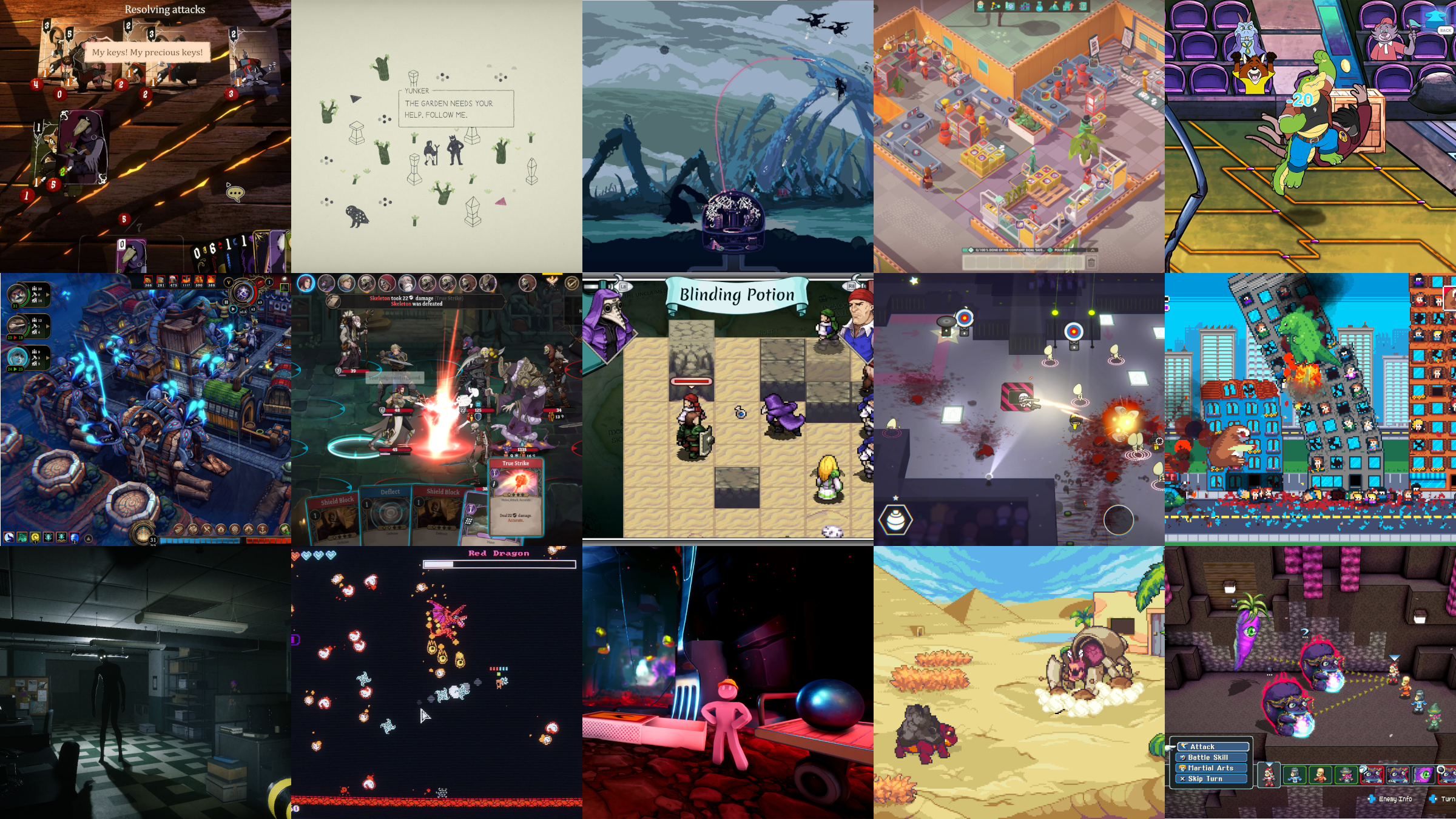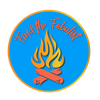Unseen Precincts: The State of Indie Games in 2023 and Beyond
Explore the world of indie game development from the perspective of those who make up the industry

Each year brings with it new surprises. I certainly didn't expect to hear so much talk about a video game centering on a housecat, but here we are.
More than anything else that came out this year, Stray represents what critics would consider the promise of independent video games. It is an unorthodox title that doesn't fit neatly into any well-defined genre, features a distinctive visual style, and accomplished all this with a small team and a fraction of the resources available to the major companies while also selling very well.
Of course, most games are not Stray. In a world where AAA companies seem like they're trying to capture the mystique of the independent developer - whether by publishing their games or partitioning their own workforces into small teams to tackle niche projects - it might seem like indie is taking over. It would be easy to say something like that but the truth, as always, is nuanced.
The video game market is ever-evolving, and as it changes it creates challenges for many and opportunities for a few. As an outsider, I am not able to fully discuss those challenges and opportunities, so I recruited some people who understand the nuts and bolts of it. I sent out a short survey to a wide range of developers, all of whom had only two things in common: They released a game this year, and they did so outside of the AAA system.

Here are the teams that responded to my survey:
- Alkemi Games, developer of Foretales
- Saman Bemel Benrud, developer of Wilderplace
- Bippinbits, developer of Dome Keeper
- Chasing Carrots, developer of Good Company
- COWCAT Games, developer of BROK the InvestiGator
- Eremite Games, developer of Against the Storm
- Mixed Realms, developer of Gordian Quest
- Labrador Games, developer of Live by the Sword: Tactics
- Laser Dog, developer of DEATHRUN TV
- Loren Lemcke, developer of Terror of Hemasaurus
- Renderise, developer of Ghost Watchers
- Ruby Dev, developer of Tiny Rogues
- Supraland Games UG, developer of Supraland Six Inches Under
- TRAGsoft, developer of Coromon
- Andrew Willman, developer of Crystal Project
There's a lot of variety in the types of games here - arcade throwbacks, RPGs, deck builders, management games, and a few titles that resist easy categorization. The diversity is good because genre is going to become very relevant - but we'll get to that later.
Steam and the indie market
The story of indie is, in many ways, the story of Steam - and Steam has had a banner year. With the growth of the consoles hampered by supply chain issues, major competitors losing their vigor, and a long-sought successful entry into hardware, Steam made a serious mark on the industry in 2022.
The question is: Has this translated into good times for the developers putting their games on the platform? As it turns out, that's a somewhat complicated question.
In previous years, there was a sentiment that the consoles were sort of the happy hunting grounds for small developers, but that wasn't the impression I received from the devs with whom I spoke. Most of them actually identified Steam as the ideal platform for their own games, owing to factors like ease of development and publication. "Steam has the best systems for people to find the games while consoles are really bad with that," says David Münnich of Supraland Games UG, a statement very different than what we usually hear from critics.
There is one factor that might make Steam start to look more attractive to certain small teams: Steam Deck. Many devs have the desire to work with Nintendo because they make the types of games that are proven to sell well on Switch - namely, the kind of throwback titles that are the bread and butter of the indie scene. The emergence of portable gaming PCs (including not just the Deck, but a range of similar devices made by other manufacturers) could provide a new market for these games that is easier to access than a Nintendo system.

Similarities between these systems - and, more importantly, their target markets - were a common refrain among the devs who specialize in more traditional genres. "The ideal platform for a game like this is handheld: SteamDeck and Switch, both platforms which we support already!" says TRAGsoft, developers of the monster tamer RPG Coromon. Loren Lemcke, the developer of the Rampage-like game Terror of Hemasaurus, concurs: "My games are also well suited for on-the-go gaming with the Switch and Steam Deck because my games can be enjoyed in small bursts."
Some developers owe even more to Steam via one of their events: Steam Next Fest, a thrice-yearly showcase of upcoming games started in 2021. A good showing at Next Fest can result in a game getting marked on tens of thousands of wishlists, a tremendous boon when the game launches. Andrew Willman is one person who benefitted from the event: "I owe all of my success to the Steam Next Fest and to the people that discovered it there, thought it was neat, and spread the word."
But Steam is a force that gives with one hand and takes with the other. It is a platform that developers choose for its sheer scope, but other aspects remain a problem. Recent years have seen a number of complaints by small developers, ranging from customers abusing Steam's refund system to play shorter games for free to changes in the recommendation algorithm that privileged games by large developers over the small teams that those changes were meant to help.
That last point is something of an issue for Loren Lemcke. Like many people working on an algorithm-driven platform, Lemcke is conflicted about that system: "It feels like I am working for Hal 9000 and I have to pray to the almighty visibility algorithm to not take away my livelihood. But also, without Hal 9000 I likely wouldn’t be able to be a game dev, to begin with. But that is how this imbalance of power plays out. Getting a few crumbs is better than no crumbs."
The choice, then, is to either work with the system or find a way around it, each of which has its perils. "I could make more money if I fully designed my games around what the algorithm likes," says Lemcke. "Every day the market forces push me in that direction, especially if I want to keep being a solo indie developer."
And understanding the system is key, as not all games in the indie space are created equal.

Popular and unpopular genres
Take a look at the biggest games of the year, remove the AAA blockbusters from the equation, and a few patterns start to emerge.
Survival-type games - which have been big hits for several years now - remained dominant in 2022. Many of the most popular non-AAA titles (including V Rising, Raft, Grounded, Stranded Deep, and Dread Hunger) feature a heavy focus on survival mechanics. Games with roguelike mechanics also did very well, including popular titles like Cult of the Lamb, Vampire Survivors, 20 Minutes Till Dawn, and Rogue Legacy 2.
Those aren't the only genres that are doing well. Horror games remain very popular, with a predictable spike in Steam releases in October. Deckbuilder games, while still uncommon overall, are some of the most profitable games on the platform. And we've also seen some breakout genres, such as casual city builders - basically SimCity with more fantastic designs.
You might notice that some of the more essential video game genres - such as first-person shooters, platformers, and RPGs - are conspicuously absent. These types of games have simply not been winners this year. Conventional platformers in particular are in a very bad place, being some of the most common yet least profitable games in the indie space.
Consumers increasingly gravitate toward open-ended games over more linear titles. This has fast divided the space into what Loren Lemcke describes as the "ultra-winners" and everyone else.
On one side of that ledger, we have Dome Keeper. As a base builder with arcade-like elements, it is a game very well suited to the current environment. "The launch exceeded everyone's expectations, and we are really happy with it," said Rene from Bippinbits. "[I] think the best answer is: we made a game that is easy to get into and interesting to play and watch."
On the other side of the ledger are games that aren't so easy to place. While 2022 did see a few big hits that weren't so easily defined - such as Not For Broadcast and Stray - there's no question that more unorthodox or experimental games can be a hard sell, not to mention a hard find.
Wilderplace, developed by Saman Bemel Benrud, is one such game. "My goal was to ship a polished game that I'm proud of, and kick start a career in game development," said Benrud. "In that sense, I succeeded. More attention and more sales would have been nice but I understand why I haven't seen either. Wilderplace is unique and understated, and hopefully, it has a long tail but it does not have a strong hook and does not tap into any hot trends. It's the kind of thing that could be rediscovered in a few years and hold up."
The statement about being "rediscovered" is an interesting one. Traditionally, video games did a large majority of their sales in the first few weeks. In the indie space, things work a bit differently. It's not unheard of for a game to have a very weak launch, only to find its niche months or even years later. Slay the Spire was a notable example of this; an even more dramatic example might be Geometry Dash, a humble precision platformer released in 2014 that hit its peak concurrent player number in 2021.
Of course, a wise developer doesn't rely on luck or patience alone. In today's crowded media environment, how one promotes their projects can determine if one succeeds or fails.

Content creators and getting discovered
It's not a secret that visibility and discovery are major issues in the world of electronic entertainment. There were a record 11,700 games released on Steam in 2021, and even as the consoles are throttling down on their releases, Steam is on track to meet or even exceed that record.
When there are 30 titles hitting the market per day, getting noticed is a challenge. For a small team without the resources for a big conventional marketing push, the best means of promotion remains the community at large - and connecting with them means connecting with the content creators they follow.
Several of the developers who spoke with me mentioned the boost they received from content creators. "We only picked up speed on that, after we released [our] demo [for Dome Keeper] and several content creators picked it up," says Rene of Bippinbits. "Before that, even though the look and premise were somewhat interesting, we didn't have any real traction." Ruby Dev, the developer of Tiny Rogues, had a similar experience: "Before release, many big roguelike game YouTubers made videos about the game, and not just 1 video but many videos - because they liked the game so much. It helped me a lot to stand out and get initial spotlight on the game that it needed."
Looking through YouTube channels, this was something I noticed - when a game appears on a channel, it tends to appear many times. This is one possible explanation for the success of open-ended games: Consumers prefer them because content creators prefer them, which means they get more exposure. A conventional platformer might only be good for a few hours of video while an open-ended game can give you as much video as you want, which is going to have a particularly strong appeal for anyone appearing on a livestream for several hours a day.
Michael Peppler, Steam curator and operator of the YouTube channel Pepp's Picks, is one of a handful of people who specialize in finding and reviewing indie titles. "The market is great for gamers but tough for developers," he says. "The audience is there but I've played plenty of great games that do not find their audience."
Peppler has some specific advice that I've never heard elsewhere: Make it clear what the game is about. "Your game could be fantastic but if people don't see it or understand it they won't play...it seems relevant to say I think most people watch my videos because the game looks interesting but they don't understand how it plays. So confusing trailers get me views."
This tracks with what I heard from some of the developers. "Usually you only have a few seconds to hook people before they move on to the other thousands of games out there, so if your game requires several minutes of footage to explain it will be extra difficult to market your game," says Loren Lemcke. And reflecting on the development process, Saman Bemel Benrud says "If I can't explain why my game is interesting in a couple [of] sentences, keep iterating."

The importance of demos
Is it possible that potential customers are turned off because they don't know what a game is about? I've seen a lot of games in which the trailers do a great job of showing off the aesthetic, humor, or themes of the game, but leave the gameplay a bit of a mystery. That's obviously a problem, as small developers are unlikely to get months of preview articles from the gaming press.
I also don't think it's a coincidence that many of the more successful games I examined featured some kind of demo. Against the Storm is a good example of this. As a city builder with roguelike elements, it is a game not easily described in words. "It was oftentimes difficult to explain what’s unique about Against the Storm in marketing materials," says Lukasz Korzanowski from developer Eremite Games. "[W]e made sure to have the demo out for players to try it out themselves."
There's a lesson here: Demos matter. When the industry started moving away from interactive demos and toward noninteractive trailers, they ceded a lot of ground to content creators. After all, if you can't go hands-on with a game, then the only way to really understand how it plays is to watch someone else play it.
Then again, maybe discovery isn't the insurmountable hurdle I'm making it out to be. Certainly, not all developers are that concerned about it. "I think discoverability is only a problem if the game is not good enough," says David Münnich. "We only try to make the game good and rely on word of mouth." Ruby Dev has a similar perspective: "If you put in the work, passion, and effort to make a good game, you are not 1 of 10 000 but one of maybe 2 and your chances of success are much much higher than everybody wants you to believe."
Yet despite this optimism, most of the developers with whom I spoke agreed with Peppler that the market is getting harder. So if the problem isn't discovery, then what's the real challenge?

The price of games and growing competition
In last year's article, I argued that one of the biggest pressures on small teams is the race to the bottom in pricing. From Steam sales to subscription services, developers are forced to price their games ever-lower, despite that the fact that this probably isn't actually helping them.
This year, I heard similar sentiments from a few developers. The first to talk about price pressures was Mara Mehlitz of Chasing Carrots, developers of the management game Good Company. "It becomes harder every year, especially with many game services such as the Xbox Game Pass or the [en masse] free giveaways," says Mehlitz. "The value of a single game decreases while the cost to produce is currently on the rise." Saman Bemel Benrud had some similar thoughts: "Prices have been driven down by free live service games, game subscription services, and tools that have made creating games (especially clones of popular games) fast and accessible."
I probably didn't give enough credit to live service games for precipitating that race to the bottom. Live service games continue to economically dominate the video game market, and this isn't going to change. When a company as stodgy as Sony announces its intention to develop as many as a dozen live service titles, it's safe to say that the trend is going to stick around for a little while. And with a generation of young consumers raised on free-to-play live service games starting to reach adulthood, there's room to grow.
The modern live service game is far and away the most capital- and labor-intensive type of project in the video game space, and it is here that small teams really can't compete. With enough time, talent and patience, there are many things that indie devs can accomplish, even if it takes six years (in the case of COWCAT Games' brawler-hybrid game BROK the InvestiGator) or eight (for TRAGsoft's Coromon). We've seen teams as small as a single person produce games that rival the AAA giants for quality. But those small teams can't output a regular stream of content like a giant company that can have hundreds of dedicated employees working on one project.
This race to the bottom offers another possible explanation for the popularity of open-ended games. When offering a premium product that competes with a free or extremely cheap alternative that brings hundreds (or even thousands) of hours of entertainment, one has to try and match it. A game that lasts a few hours isn't going to look as attractive even if it's cheap in absolute terms because it still doesn't look like a good value. And in a global economic downturn when everyone is cutting back on non-essentials, value is paramount.
Sadly for developers, this is unlikely to change - it's not a single trend but several, and we aren't going to see all of those trends change at once. But for some developers, there may be an entirely new path at hand.

New competitors enter the market
The two people behind Laser Dog are among the few who are lamenting the death of Google Stadia. "Our most recent console/PC game Death Run TV has also done well, again good average for reviews and surprisingly popular on Stadia...we’ve had good support from Apple and Google throughout and this has gone a long way towards helping our games 'get out there'."
The next big trend in video games may well be the number of non-game companies moving into the space. Yes, Stadia was a failure, but that's hardly the only case of a giant company diversifying into electronic entertainment. In the same year that Google nixed their game streaming platform, Amazon published the MMORPG Lost Ark, a fixture on Steam's most-played games list.
The huge difference between Google and Amazon speaks to something: For these companies, video games are still very much an experiment. We're likely to see many more spectacular successes and dismal failures as more companies start moving within the market. A lot of experimentation is going to involve smaller teams, and it's not limited to North American companies, either - look at the success large Chinese companies have had in the market.
There's a certain logic behind finding a small developer and throwing money behind them. For a big corporation, the amount of money needed to fund such a small game is negligible, but it can have a big impact on the quality of the final product. Most likely that final product will only be modestly successful, but there's always a chance of hitting it really big. The company that funds the next League of Legends or Minecraft stands to make some major dividends.
Working with these companies isn't going to be for everyone. Accepting support from a large company always means living with whatever strings come attached. But if that means being able to hire enough employees to have a proper team, then that's a bargain that many developers will gladly take.

The outlook: What comes next?
The market will continue to evolve in 2024, offering new challenges and (with luck) opportunities to go along with them. So the final question: What does the scene look like going forward? Is there more cause for optimism or pessimism?
Among the people who answered me, there's a general understanding that the indie space in particular has been changing very quickly, but what that means is very much a matter of perspective.
Aldric Chang of Mixed Realms sees the market - or rather, the consumers - changing in ways that are beneficial to developers. "Players are increasingly understanding that indie games are not AAA titles and they have realistic expectations that indie game developers do not have the budgets to package their games with expensive cut scenes, voiceovers by Hollywood a-listers, licensed IPs like Marvel, etc," Chang says. "But what indie developers are expected to deliver is a good game with tons of fun and replayability. And if we deliver on those, this is a great market for small development teams."
The feeling from TRAGsoft is very similar: "The market currently has a lot of indy titles. But what makes a game stand out is the quality in gameplay. Non-AAA graphics are easily accepted if the gameplay is great. So yes, I would say the market is good for small teams with quality gameplay titles."
By contrast, others see a market that is becoming more difficult. Sometimes it's a matter of resources, as suggested by Renderise: "[I]f you just a small indie [team], with like 1-4 members, you may create your game and sell 50k copies easily, but for teams with like 10-30 members it's not that good." Then there's the issue of growing competition in the space. "It's certainly much harder to get a successful game noticed in 2022 than it was 8 years ago," says Fabrice Breton of COWCAT Games. "Production values have increased a ton overall."
And that difficulty may not even be restricted to smaller teams. "The saturation of the market presents different challenges for all developers," says Lukasz Korzanowski. "While small teams struggle to get their games noticed in the first place, bigger studios and publishers face growing costs of making their games stand out from the crowd."
Maybe the best way to describe the state of the market is to say "It depends," or - if we're being savagely honest - "We don't know." In a world where tastes are dictated by inscrutable recommendation algorithms and an overgrown media environment that changes direction on a whim, success can seem arbitrary and beyond us to predict. So it would be foolish to try and make predictions in such a market.
Not that this is going to stop me, of course.

Peering into the cracked crystal ball
The downside to making predictions is that you're usually wrong. The upside to making predictions is that if you're right even once, you get praised for the rest of your life. It's a winning bet.
This year, I'm making some slightly longer-term forecasts. These are things that I anticipate happening in the next five years, so don't mark me a fool until the decade ends.
- Live service games will hit a saturation point where a combination of excessive competition and rising costs put the style into a slow but steady decline. Despite this, features associated with live service games - what I've called "live service lite" elsewhere - will become increasingly common and will be especially important for profitability in the indie space. These might include a significant increase in DLC, road maps with regular updates, battle pass-like reward systems, and (for the most ambitious developers) limited MMO features.
- As AAA companies continue to consolidate the market, they will quietly begin to absorb some of the larger indie developers and publishers. The main focus will be acquiring valuable branding and IP, with the teams themselves being somewhat ancillary. Depending on the new parent company, these teams will be either left alone or incorporated into other parts of the company.
- More non-game companies will enter the video game space, either on the development or distribution side. These companies will draw in an ever larger share of small development teams, but we'll also see some teams created from the remnants of dead studios and even brand-new teams created from scratch. This will draw in many teams and individuals who don't want to work with the growing AAA behemoths, but the results will be mixed at best and most of these companies will end up withdrawing from video games having achieved very little.
- The games that are currently popular will remain on top; however, as low-cost systems (including portable gaming PCs and micro consoles) continue to grow their presence in the market, there will be an increased interest in traditional game genres. To remain competitive in this growing space, developers will have to experiment with new features and attractions, spawning a generation of platformers and adventure games with novel mechanics, deeper storytelling, and wholly new graphics styles.
But, of course, there is no predicting where we'll be in a year's time. All it takes is a ripple in popular culture or the world economy to create a trend or destroy one. Come January, we'll be looking at a brand new landscape - perhaps one far different than any of us could predict.
See you next year.
